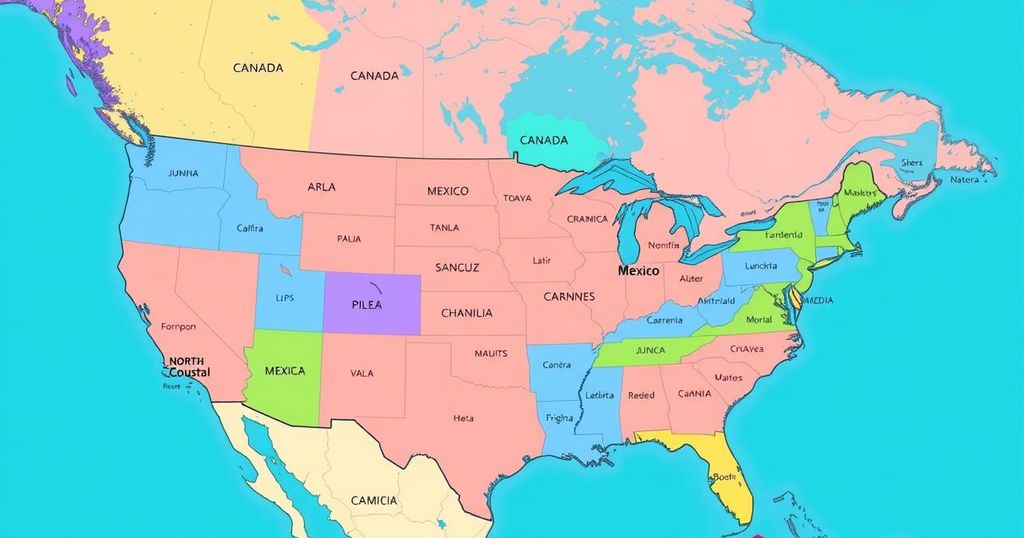Namibia’s election on Wednesday poses a significant challenge to the ruling SWAPO party amid a backdrop of economic hardship, corruption, and disillusionment among the youth electorate. This election is characterized by the potential for a major shift, with SWAPO facing a fragmented opposition. The outcome may set a precedent for future governance in Namibia as the electorate grapples with lingering socioeconomic issues and a changing political dynamic.
On Wednesday, Namibians are set to cast their votes in an election that presents a formidable challenge to the South West Africa People’s Organization (SWAPO), which has held power since the country’s independence in 1990. This electoral cycle takes place against a backdrop of widespread discontent emanating from elevated unemployment rates, rampant government corruption, and a critical housing crisis. The unpopularity of SWAPO has intensified as disillusionment among voters, particularly the youth, grows, echoing a broader trend observed across southern Africa this year, where several former liberation parties have seen their fortunes dip significantly at the polls.
Recent elections in the region painted a somber picture for liberation movements. For instance, the African National Congress (ANC) in South Africa lost its absolute majority in Parliament for the first time in thirty years. Similarly, Botswana’s ruling Botswana Democratic Party suffered a monumental defeat, losing its status as the largest party in Parliament. Mozambique’s ruling Frelimo party faced accusations of electoral fraud, leading to violent protests that claimed numerous lives. In this challenging environment, SWAPO must navigate a complex electoral landscape.
Subjecting the political dynamics further, the youthful Namibian electorate—a demographic that constitutes over 40 percent of registered voters—may disrupt traditional voting patterns. Younger voters exhibit a disconnection from the historical narratives championed by liberation movements, as emphasized by many analysts who note that they prioritize pressing issues like job availability over historical grievances. Oscar Van Heerden, a member of the ANC, remarked, “The euphoria of liberation movements is rapidly disappearing among the Gen Z generation.” In response, SWAPO has sought to appeal to this demographic through artistic engagements and by selecting younger candidates to its parliamentary slate.
Amid growing dissatisfaction with the status quo, issues such as a severe housing shortage, and persistent unemployment—estimated to be 33 percent since the last comprehensive survey—remain at the forefront of public discourse. Observers predict that the nostalgia for past liberation victories may fade as citizens confront the harsh realities of their living conditions. As Ndumba Kamwanyah of the University of Namibia articulated, “The citizens for the most part were in what we call a honeymoon. But there is that threshold of 30 years when people realize that, ‘No, my situation did not change.’”
Despite these pressures, SWAPO might benefit from the fragmented opposition landscape, where 14 candidates are vying for the presidency. The fragmentation could dilute opposition votes, while the former SWAPO member, Panduleni Itula, who previously garnered substantial support, may still attract protest votes but could potentially return some of those dissatisfied voters to SWAPO this time around.
This election carries significant implications, as it could usher in either Namibia’s first female president—Netumbo Nandi-Ndaitwah, a longtime SWAPO member and current vice president—or represent a monumental shift away from the long-standing dominance of SWAPO by yielding victory to an opposition party for the first time. Whether SWAPO retains its hold or succumbs to the rising tide of opposition will be discerned shortly after the polls close, with results expected within five days. The significance of this election extends beyond individual candidates; it embodies the mounting expectations of a populace that yearns for substantive change.
Namibia’s upcoming election marks a pivotal moment in its political landscape, closely scrutinized amidst rising dissatisfaction with SWAPO, the ruling party since the end of apartheid. The electoral context reflects broader regional trends where liberation parties struggle in the face of economic stagnation, corruption, and rising youth disenchantment. These dynamics inform the overarching themes of this election—youth engagement, historical loyalty, and pressing socioeconomic issues.
The impending election stands as a key referendum on the ruling SWAPO party’s governance and the broader efficacy of liberation movements in southern Africa. With youth voters becoming increasingly pivotal, the outcome may signal a significant shift in Namibia’s political paradigm. Either way, the election results will likely influence the trajectory of political engagement and voter dissatisfaction in Namibia and beyond.
Original Source: www.nytimes.com




